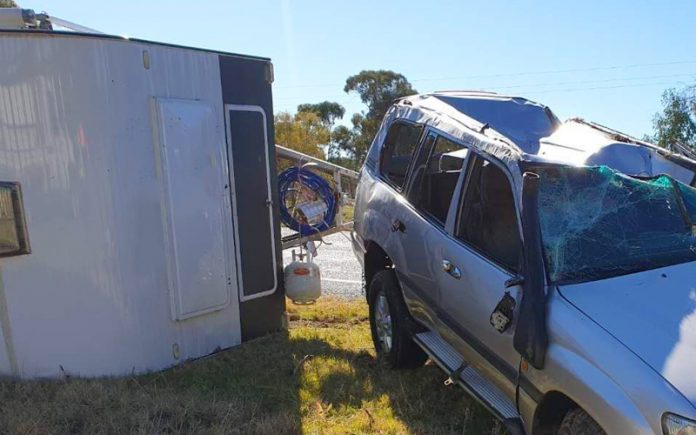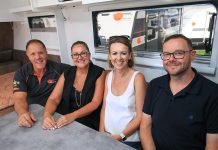A caravanning couple is speaking out to warn others of the dangers of carbon monoxide poisoning.
Peter Greenwood, 74, and his wife, Ann, 72, had 56 years of accident-free driving experience, and have made four trips around Australia – the first in 1967 in an FJ panel van. But in June 2019, the couple made an error that could have cost them their lives. “We had set off on a trip around Australia from North Narrabeen (NSW) with our car and van, a 2001 100 Series Land Cruiser and a 20ft van that was only a few years old,” Peter told GoRV. “On day two, we had spent the night free-camping at a waterside spot in Gundagai (NSW).”
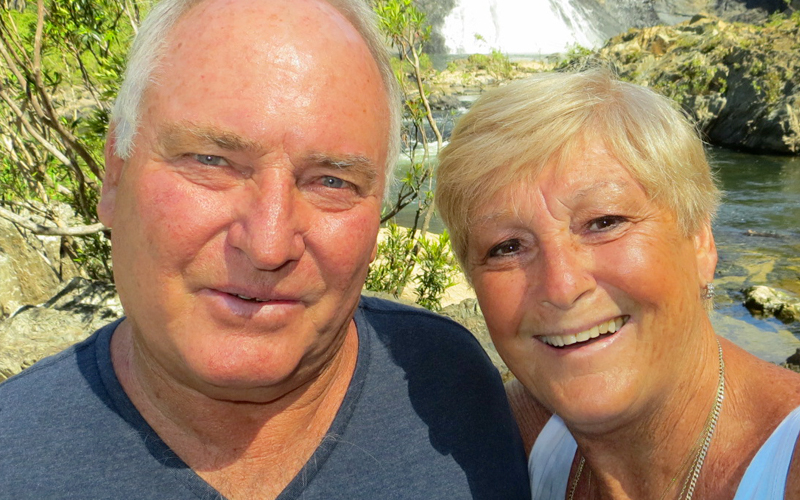
When they awoke inside their van, it was cold – only six degrees. And not having a working heater inside their van prompted Peter and Ann to use the gas stove to warm the air. To be clear, this is something you should never do – as Peter and Ann discovered. The risks of carbon monoxide poisoning are very real; in fact, some caravans are now fitted with carbon monoxide alarms as standard equipment.

DISASTER STRIKES
The gas stove, Peter said, heated the van to about 14 degrees. After breakfast, they packed up and hit the road. “We drove through Wagga Wagga, heading for Narrandera, and we both were feeling strangely unwell, so we decided to stop at next the town,” Peter said. Moments later, Peter had a minor ‘black out’ while at the wheel.
“The next thing I knew, I was alerted by my wife, Ann, that I had veered off onto the left side of the highway and as I opened my eyes, a plastic white guide post was directly in front of me. My automatic reaction was to swerve right to avoid this minor obstacle, resulting in the van, which had no electronic stability control, pushing my vehicle around.”
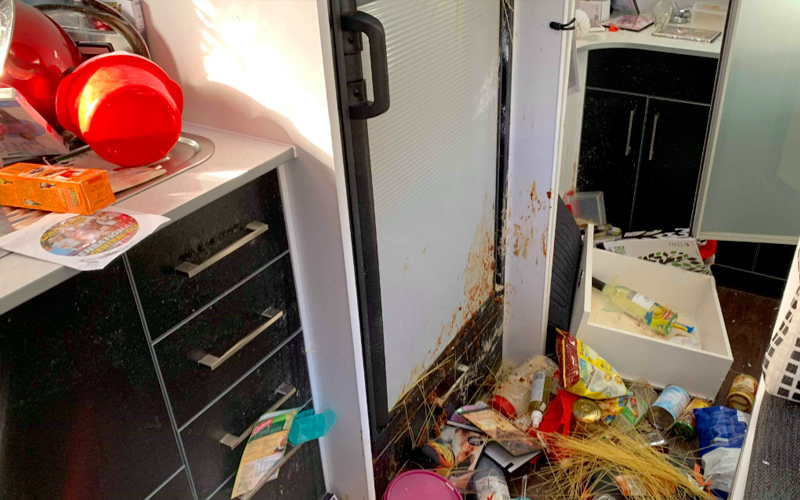
It was then that Peter made what he considers to be the biggest mistake of his decades behind the wheel: he tried to correct the uncontrolled slide by turning left. “The instant reaction was for the van to flip my Land Cruiser 360 degrees over while everything rotated 180 degrees, ending up on our wheels and facing the wrong way on the side of the Sturt Highway, with the van on its right-hand side but still basically intact.
“The unbelievable sounds of the roof caving in, every bit of glass smashing and all the contents exiting our car, except the portable fridge, and scattering all over the highway was something we will never forget.” Fortunately, there was no other traffic around. However, within a minute, people had stopped to assist.
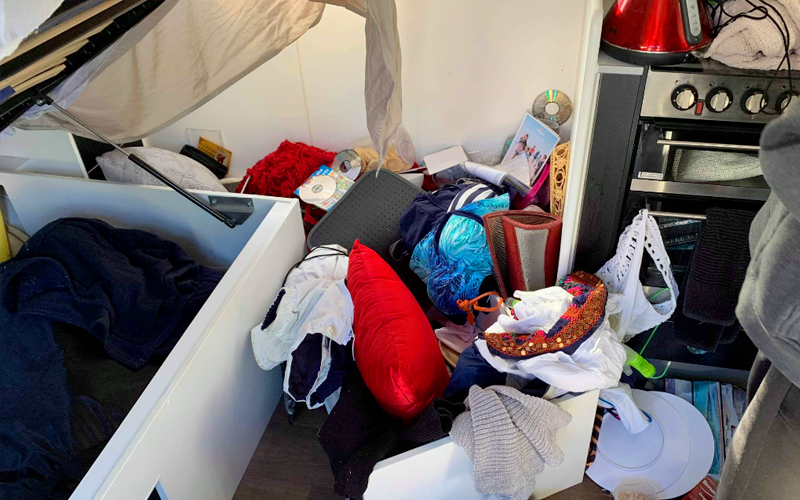
HOSPITAL RECOVERY
Surprisingly, they could still open the Cruiser’s doors, despite the damage it had sustained, and exit the vehicle safely. In fact, both Peter and Ann suffered only minor cuts and abrasions – caused by flying glass – in the accident, and they found themselves able to gather their personal items, including a generator, off the road.
“Would you believe we were only 3km from stopping at Narrandera, our next location, when the accident happened?” Peter said. “And that’s where we were transported by two ambulances to hospital for check-ups.” They were informed that the unwell feeling they both experienced moments before the crash, and which caused Peter to momentarily lose consciousness at the wheel, was caused by carbon monoxide from the stove entering their bloodstream. “If our exposure had been for much longer, it could have been fatal,” Peter told GoRV.
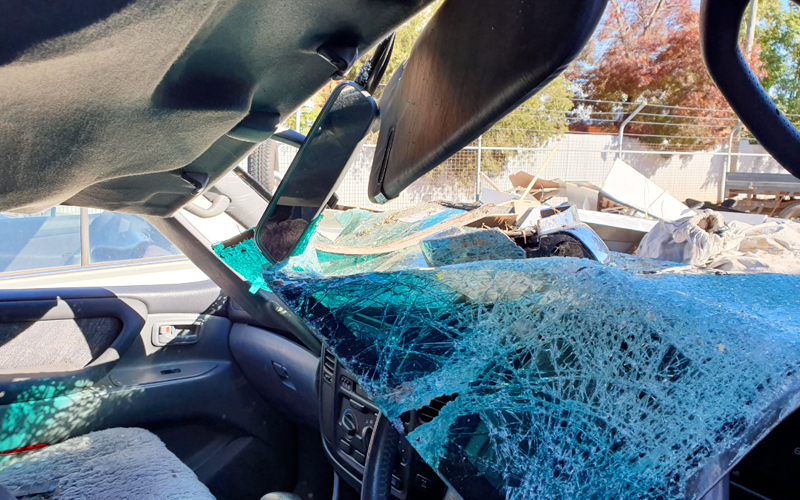
“You cannot imagine the dramas that were to follow. After also transferring to Wagga Hospital overnight for X-rays and blood tests, we were released to be picked up by our eldest sun, Shane, who had driven from the Central Coast, and we drove to the salvage yard at Narrandera to see the mess I had created. Both van and vehicle were eventually written off by our insurance company – our insurance company made everything as easy as possible.”
Inside, the van was a mess. The contents of their packed fridge, as well as their personal belongs, were scattered everywhere. Peter and Ann salvaged what they could and headed home in their son’s car, returning two weeks later with a 4WD and trailer to salvage more items.
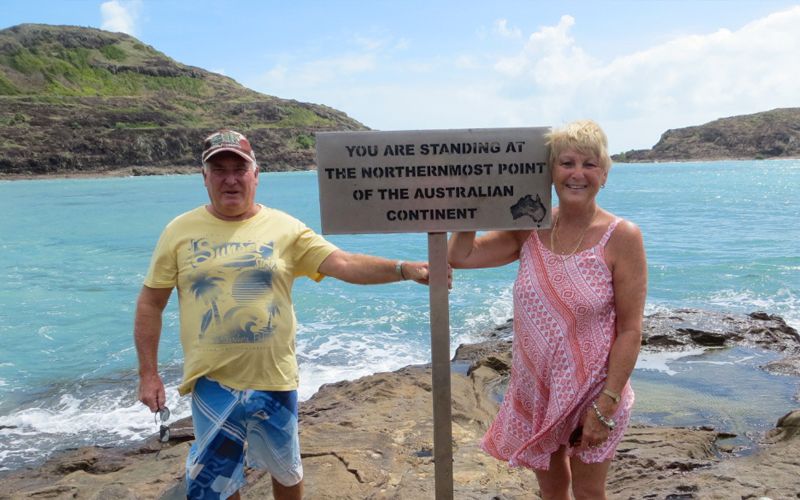
WARNING
Eventually, their insurance company paid out, allowing the couple to purchase a 2011 100 Series Cruiser and a 2016 21ft caravan – with electronic stability control. However, numerous items were not included on the insurance, including a $2000 surf ski, a $400 roof rack, and an $800 laptop computer.
Peter and Ann were also wise to make sure their replacement caravan had a carbon monoxide sensor fitted, just to be safe. “Never, ever use your caravan’s gas stove as a heater,” he said. “There are numerous options on the market, proper space heaters that are designed to safely heat your caravan. A gas stove, however, gives off carbon monoxide, and in a confined space, such as a caravan, prolonged exposure can be lethal.”
CARBON MONOXIDE FACTS
• Carbon monoxide (CO) is an odourless, colourless, tasteless gas that is slightly lighter than air. In sufficient concentration, it can kill within minutes.
• It is produced by the incomplete combustion of any fuel that contains carbon, including gas, natural gas, oil and coal and wood products.
• Because many of these fuel sources are only used in cold weather, CO poisoning is considered by some to be a ‘seasonal’ risk. However, it can build up in any enclosed or semi-enclosed space. Exposure can occur through inhalation of the gas, or by eye or skin contact when it is in its liquid form (CO becomes a liquid under high pressure).
• CO is a chemical asphyxiant. When inhaled, it bonds with the hemoglobin in the blood, which is responsible for carrying oxygen throughout the body. The CO replaces the oxygen molecules in hemoglobin and deprives the heart, brain and body of oxygen. High concentrations can displace enough oxygen in your body to cause oxygen starvation.
• Symptoms of low-level carbon monoxide poisoning include headaches, nausea, weakness, dizziness and confusion. Exposure causes blood pressure to rise in an attempt to get more oxygen to the body. As a result, the skin might take on a reddish colour.
• As CO exposure increases, more serious symptoms develop, including a lack of coordination, chest pain, vomiting and loss of consciousness. If exposed to CO long enough, coma and death can occur.
• And so we repeat: never use your RV’s gas stove as a heater.


